Against a backdrop of negative equity and industry closures what better a time for investment executives, airlines and airport owners and operators to get together to look at the changing nature of the global aviation industry. Today’s marketplace is certainly the most challenging it has ever been and while investments in airports have previously been viewed as a sure way to make money, things are much more complex and the risks considerably greater. Simply selecting the right asset can be hardest decision of all and then you still have to consider its value in a market with an uncertain short-term future due to the economy and the current volatility of fuel prices.
It was therefore no surprise that the inaugural Invest & Manage Airports conference at Stamford Bridge stadium, home of Chelsea Football Club, proved such a draw for delegates last week. Here we highlight some of the key observations from the two keynote addresses, the views of a special panel of airline executives and some of the other central themes that were discussed during the two day event.
Michael McGhee, founding partner of Global Infrastructure Partners (GIP), the owner of both London City and London Gatwick airports, provided an insight into airport investment from the viewpoint of an owner, revealing in the process that the company is in the process of raising funds to expand its airport portfolio. In his keynote address to delegates he confirmed that GIP was “in the process of raising a second fund to spend in the airport sector” but did not give details of potential targets.
According to McGhee there are five main areas to consider when making any airport investment, namely the quality of the asset; the growth outlook; access to debt finance; policy and regulation and improvement potential, i.e. how the asset will develop over the life of the investment. However, he warned that the historical safety net of airport growth is no longer a guarantee. “Gone are the days when you can rely on growth to bail you out of a poor investment decision. You now need to have a Plan B to get a return on investment,” he said.
GIP has seen this first hand in the UK market as a reducing rate of growth in this mature market and external factors such as the unprecedented volatility of the economy and Airport Passenger Duty (APD) have influenced its own decision making. “The dynamics of the business have changed,” explained McGhee, highlighting how over optimistic forecasts from industry and financial analysts can seriously impact any investment decision and how the increased mobility of low-cost airlines have made everybody much more cautious.
Despite this McGhee outlined how the investment fund had successfully refinanced following the acquisition of London Gatwick, raising £600 million in bonds and £235 million in bank debt, but this clearly showed, he noted, the issues impacting the sector as market conditions were difficult with banks unwilling to underwrite big debt commitments. “Banks operate with a herd mentality, their current strategy is deleveraging, shrinking their balance sheets to meet capital ratio,” he said, adding that while the airport investor wants to borrow for long periods of time the longest most banks are prepared to talk about is approximately five years.
GIP first entered the airport business five years ago when it acquired London City, but it is its more recent purchase of London Gatwick that has caught the industry’s attention, ending BAA’s stronghold in the London market and transforming the city’s number two airport into an independent facility. GIP acquired London Gatwick for €1.65 billion in December 2009 with a group of 12 banks providing the acquisition facilities for this transaction. “We are in one of the worst credit markets in recent history,” said McGhee, “and we saw that with the London Gatwick deal as the banks were scaled down from their original commitments.”
Over the past two years GIP has invested heavily in developing London Gatwick and it is already beginning to see some returns on this outlay. The passenger experience is certainly much improved on the offering of its previous owner, while existing airlines are expanding and new operators are entering the market, the most notable being Air China, Vietnam Airlines and AirAsia X. “We are looking to segment the market at London Gatwick rather than the one-size fits all product of the past,” said McGhee. “This way we have a tailored product to each area of the business.”
GIP is now working to increase capacity at London Gatwick, already the world’s busiest single runway airport, moving hourly movements from 50 to 55 - it has already reached an hourly utilisation of 53 movements. However, its growth ambitions are restricted by the UK Government’s aversion to enhancing airport capacity in London. According to McGhee, the UK Government’s policy is easy to understand… “There isn’t one!” Taking into account all these parameters what does Michael McGhee think is the most important single piece of advice when it comes to airport investment? “Buy it as cheaply as you can,” he quipped during his presentation.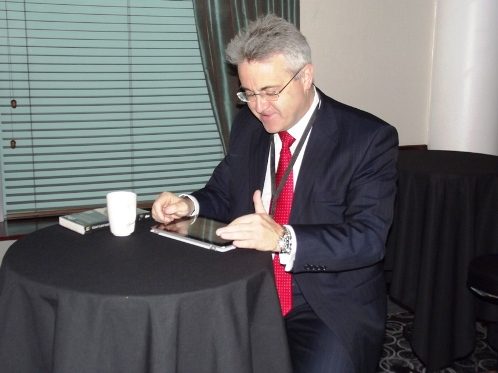
Providing the operator’s perspective on airport investment, Paul Kehoe, Chief Executive Officer, Birmingham Airport used his own experiences to highlight that airport investment decisions were historically not always based on best business practices, using British Aerospace’s deal for Liverpool Airport as the perfect example. Having previously worked for TBI Airports (a company he revealed had a background in pie making prior to its first airport investment), Macquarie and now Abertis and having held senior management positions at Bristol and London Luton airports, he noted the most important difference between an owner and an operator. “For the owner you need to have a good Chairman to manage the board and leave the Chief Executive to operate the business,” he explained.
And running the business is no easy task, according to Kehoe, especially in the current fragile marketplace. “Away from London airports are cutting one another’s throats to win business,” he said, highlighting Irish budget carrier Ryanair as the perfect example. “We would never have believed this twenty years ago but we are now at the stage that we as airports are having to pay airlines to come and use our facilities,” he added.
Many people in the industry, Kehoe claimed, have a utopian view, “but realistically,” he noted, “we are at a stage with some operators that you now have to go over an assault course to even get close to the aircraft.” With this in mind he highlights that a customer service strategy is key, along with smart innovative solutions if you are to grow your airport.
For his owner Abertis, generating good returns for shareholders and raising customer service standards are the pillars of its business policy, according to Kehoe and this is what he has attempted to develop at Birmingham. He acknowledges that the airport was “a complete mess” ahead of privatisation with a business policy that had resulted in suffocated growth. “We had not reduced our fees for a long time so when British Airways pulled out of the airport we were unable to react,” he acknowledged, but it is now developing a new aviation business development team and is hitting the market with a renewed vigor.
Its revised policy seems to be working with the airport now running at a profit and with full service carrier growth of around 12 to 15 per cent a year. The airport has also been quick to adopt social media as a platform to interact with its passengers, especially as it is now gaining around 55 per cent of its income from non aeronautical fees. “You need to be aware of the customer’s requirements,” explained Kehoe noting that “the smart phone is the weapon of the future” for airports. “Passengers are quick to message or tweet when something goes wrong. You need to be able to react and bring an enhanced level of customer service to the passenger journey,” he added
Invest & Manage Airports was not all about the airports however, and Alex Cruz, Chief Executive Officer, Vueling Airlines; Vijay Poonoosamy, Vice President International & Public Affairs, Etihad Airways and Eric Oberhuber, Head of Planning & International Relations, Condor highlighted what low-cost, full-service and charter carriers want from an airport investor during a panel discussion.
They all highlighted that partnerships between airlines and airports are of increasing importance, but it was Alex Cruz who generated the most debate among delegates with his views on the matter. “We want to have partnerships that are deep and long lasting with airports... but they need to match the way we are and the way we think,” explained Cruz, whose Vueling Airlines has become one of the innovators of the hybrid low-cost business model that is now becoming more prevalent. 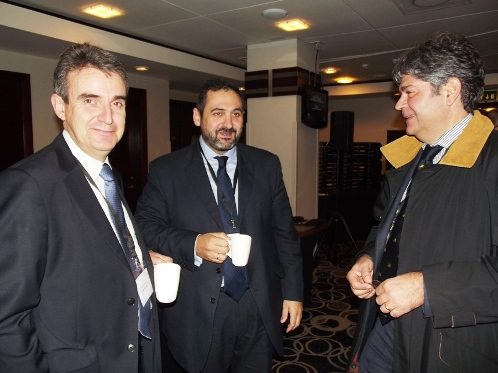
“We like to sit down with airports and discuss how we can work together on revenue generation. We know what they want; it’s the same we want. We have a good knowledge of our customers that would be valuable to airports. We know what they are willing to pay for and not, and when. What their mindset is throughout the whole travel process and how they want to use new technologies,” he added.
According to Cruz, airports need to be more flexible. “We need to share and cross-reference data in order to define new products and services passengers are willing to pay for but very few airports have developed product or service flexibility and time to market into their business plans,” he said. “From parking to check-in to security to boarding to arrivals, airports must improve service whilst generating additional revenue. In order to do that they must be ready to test new initiatives, and be very quick to implement the successful ones.”
One such example that Vueling is pushing for is the use of dedicated gates at airports. “The holy grail for an airline is to have a permanent gate at an airport where we can look at maximising revenue generation and enhance customer service to the travelling public,” said Cruz. “We could share new ideas for generating revenues with airports in relation to the boarding process,” he added.
According to Vijay Poonoosamy of Etihad Airways, there is no differentiation between private or public ownership or management of an airport, “it is all about how it is run,” echoing the views of Alex Cruz that an improved dialogue between airlines and airports is essential moving forward. “Building partnerships is part of our DNA at Etihad Airways, whether that is with other airlines or the airports we serve,” he added.
Etihad Airways has expanded rapidly since it was formed and Poonoosamy remarked that it is unlikely that any major carrier will grow as quickly in the future. The airline is now established as a major network carrier, but Poonoosamy noted that it now has its position in the marketplace. “We are a mid-sized airline and will remain a mid-sized airline. Big is not the target but product and partnerships are.” Looking ahead he said airlines cannot grow at the expense of airports and airports cannot grow at the expense of airlines. “It needs to be a win-win situation and airports need to engage with airlines,” he added.
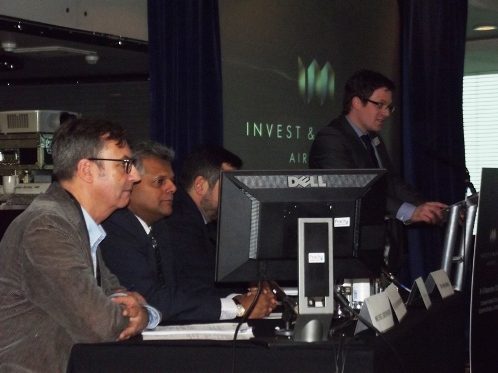 During the panel discussion Eric Oberhuber of Condor highlighted some of the issues that could face greenfield airports as they try to attract operators to use their facilities. “Greenfield airports are always worth looking,” he said, but warned they need to understand where the traffic is coming from and look beyond point-to-point markets. From a personal viewpoint he said they would not work for Condor as the airline’s aircraft are “too large to be able to fly a sensible schedule of three flights per week” from these airports.
During the panel discussion Eric Oberhuber of Condor highlighted some of the issues that could face greenfield airports as they try to attract operators to use their facilities. “Greenfield airports are always worth looking,” he said, but warned they need to understand where the traffic is coming from and look beyond point-to-point markets. From a personal viewpoint he said they would not work for Condor as the airline’s aircraft are “too large to be able to fly a sensible schedule of three flights per week” from these airports.
The German charter carrier is a subsidiary of tour operator Thomas Cook, which has been in the headlines these past weeks for its poor financial situation. Oberhuber said that despite the poor performance of its parent, the airline is a relatively strong position having already weathered various industry crisis during its history and restructured its operations accordingly. “We have a very different business model to many of the other Thomas Cook airline subsidiaries,” he added.
While one-to-one meetings between investors and airports were taking place in private in executive boxes around the football stadium, delegates had the opportunity to learn more about airport development, with a focus on the Indian, Australian, Polish and Nigerian markets. On the first day Puthalath Nair, Chief Executive Officer – Corporate Aviation Sector of GMR Group and Rajeev Jain, Chief Executive Officer of the GVK Holdings-owned Mumbai International Airport offered the Indian perspective.
There has been a considerable investment in Indian airport infrastructure over the past decade with Vijay Poonoosamy of Etihad Airways acknowledging that this has enabled the Abu Dhabi-based carrier to grow its network into the country, particularly serving secondary markets. "It has been an incredible journey for Etihad in India," he said. "We expect to continue with further destinations added in the future."
Meanwhile, at the country’s main gateways Nair claimed the new Terminal 3 at Delhi International Airport is “creating a new tomorrow in Indian aviation” and Jain described the proposed new terminal at Mumbai International Airport as being “an iconic building in the city”.
GMR Group is now the fourth largest private airport group in the world and has invested $4.2 billion in operating Delhi and Hyderbad Airports in India and Sabiha Gokcen Airport in Istanbul, Turkey. It is also proposing investing a further $500 million in developing Male International Airport in the Maldives.
GVK Holdings, which already has a large presence in India, investing in sectors from coal, oil and gas to hotels and airports, outlined its plans at Invest & Manage Airports to invest heavily in more airports in the country as well as expand into overseas facilities. GVK already has a controlling interest in Mumbai’s Chhatrapati Shivaji International Airport and Bengaluru International Airport, and Jain acknowledged that it has been offered “right for first refusal” to operate the new Navi Mumbai International Airport (NMIA), when it is opened.

In the meantime GVK is investing in enhancing the customer experience at Mumbai’s Chhatrapati Shivaji International Airport, a project that has been difficult due to the limited scope for additional growth around the airport site. “There is very little scope to expand Mumbai International, so are having to demolish the current infrastructure and rebuild," Jain said.
GVK is also working on a terminal extension and the entry into service of a second runway at Bengaluru International Airport next year and is involved in a project to build a new 2,200 acre second international airport for Goa, in Mopa, 40km from the current international gateway. According to Jain the masterplan for the airport, which will initially handle 700,000 mppa but which is forecasted to grow to 5.4 mppa by 2025 and 10.6 mppa by 2045, is due for completion by October 2012 with tender documents being released in December 2012.
Outside of India, GVK is looking to invest in two greenfield airports in Indonesia - the New North Bali Airport and Yogyakarta Airport. It has already signed a preliminary Memorandum of Understanding (MoU) and currently holds exclusive rights to manage the two facilities. The New North Bali airport is being proposed to cater for the additional traffic from the capacity-constrained Denpasar Airport in Bali, while the new Yogyakarta airport will replace the current facility that is shared with the military. According to Jain, feasibility and master planning on both these projects are currently under way.
On the second morning a similar presentation was made by Romain Py, Executive Director Infrastructure Investments, JP Morgan Asset Management on Australia’s North Queensland Airports. He highlighted the amazing growth that North Queensland Airports (NQA) has witnessed since a consortium led by institutional investors advised by JP Morgan Asset Management bought Cairns and Mackay airports from the Queensland Government in January 2009.
NQA now owns and manages the two facilities under 99-year leases. “We have seen 81 new routes introduced since the acquisition equating to over 1.4 million new seats,” said Py, who explained that a successful refinancing in July this year has raised approximately A$530 million to refinance its existing A$344 million debt and to fund future capacity expansion needs.
Having heard executives of Condor and Vueling Airlines dismiss the opportunity of greenfield airport developments to their own particular business models the previous day, Burt Cohen and Piotr Okienczyc ended the formal presentations with more information from the airport perspective. Burt Cohen, Managing Director and President, Heritage Consortium highlighted the Gateway International Nigeria project to develop a new facility to serve the ‘Greater’ Lagos market. Heritage Consortium is an Atlanta, US-headquartered company founded by Nigerian interests in 2010. It has entered into a public private partnership with Ogun State in Nigeria to develop the new Gateway International Airport (GIA).
According to Cohen, the new airport and wider 5,000 hectare Airport City is “central to the future catchment area and footprint of ‘Greater’ Lagos,” and is anticipated to open for commercial use in the first quarter of 2015. “After completing our business plan in 2010 and revising our forecasts this year final design work has now commenced and we could potentially see ground break in the next quarter,” he said, adding that several expressions of interest for lending had already been identified and negotiations with civil contractors had begun. “We have already held discussions with several international airlines with strong degree of interest in market and airport potential,” he added.
Heritage consortium is currently seeking equity partners; management expertise to fill out the development team; potential lenders and operational experience for future management of the asset. With the Nigerian economy growing at eight per cent per annum, an increasingly mobile population, a strong ‘front end’ demand on international routes and strong traffic growth (Lagos passenger traffic was up 11 per cent in 2010 and cargo volumes up 14 per cent the same year), Cohen highlighted the strong opportunities to invest in the project. However, he noted that with no strong mechanism for infrastructure development and a young, fragile democracy there are challenges. “It is Nigeria, after all,” he quipped.
With the European viewpoint on this subject, Piotr Okienczyc, President of the Managing Board, Warsaw Modlin Airport highlighted that Poland was a resilient destination and a destination open to investment opportunities. Using a recent Ernst & Young survey as his ammunition he pushed what the country had to offer, namely the strongest economic growth in Europe during 2010 and a steady business climate as a gateway to Eastern Europe and a hub for many industrial groups.
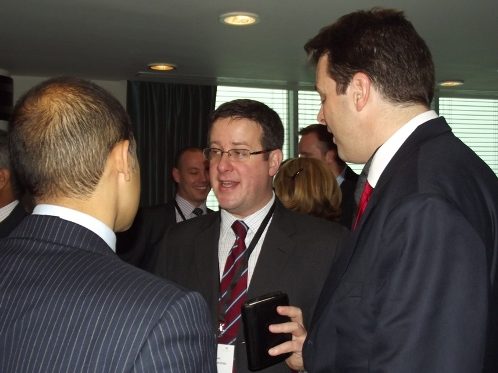 Warsaw Modlin was up until 1992 used exclusively by the military, but from next year it will re-open as a dedicated commercial facility and alternative gateway to the Polish capital, approximately 35km north of the city. Its new passenger terminal will have the capacity to handle 3.2 million passengers a year and will be fitted out with 22 check-in desks and four independent departure areas and gates - one non-Schengen and three Schengen with the option to reconfigure in the future. “Warsaw Modlin Airport is a sound base for sustainable growth in the largest airport market in Central Europe,” explained Okienczyc.
Warsaw Modlin was up until 1992 used exclusively by the military, but from next year it will re-open as a dedicated commercial facility and alternative gateway to the Polish capital, approximately 35km north of the city. Its new passenger terminal will have the capacity to handle 3.2 million passengers a year and will be fitted out with 22 check-in desks and four independent departure areas and gates - one non-Schengen and three Schengen with the option to reconfigure in the future. “Warsaw Modlin Airport is a sound base for sustainable growth in the largest airport market in Central Europe,” explained Okienczyc.
Having looked at the various opportunities and examined case studies of current and past projects, it is only fair to leave the last word to those advising the investors directly. In what was described as an ‘Investor Masterclass’, Jaime Guillen, Chief Executive Officer, Faros Investment Partners (a London and New York based boutique group that specialises in offering strategic, investment, financing, managerial, and operational expertise in the transportation and energy sectors) and Richard Tollis of Phar-Lap Consulting discussed during Invest & Manage Airports what potential investors look for and require in the world of aviation asset investment.
The view was that now was certainly not the time to sell or refinance an airport asset. “Nobody by choice would be selling airports at the moment,” noted Tollis, who acknowledged that unfortunately choosing the time of the sale was not an option in many cases with owners having their hands forced by political or historical decisions. There is also the fact that banks are now becoming increasingly conservative and less willing to lend money meaning airports are having to look elsewhere for potential sources of funding.
Although a number of privatisations or refinancings are planned for 2012 the panel believed only two were “guaranteed” to go ahead in 2012, in their opinion, the privatisation of Brazil’s Airports and BAA’s sale of Edinburgh Airport in the UK. New investment opportunities in the BRIC countries were also highlighted for their “great potential” but “legal and cultural issues can make them prohibitive,” according to the experts.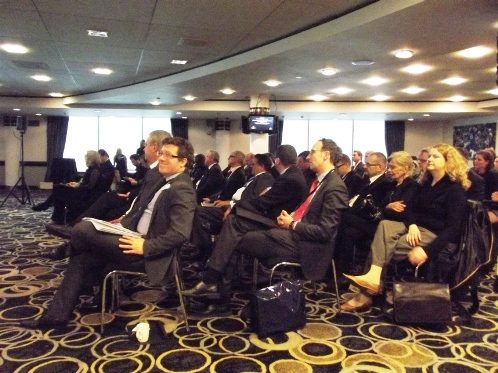
The inaugural Invest & Manage Airports conference enabled airline and airport delegates to share their experiences and expertise with the investment community in a relaxed environment and clearly highlighted that the traditional airport ownership/operation relationship has become blurred as investors develop a single platform capability, a fact well summed-up by Jaime Guillen of Faros Partners.
“While there are some advantages for the investor of having a third party operator, there are also many disadvantages, such as not knowing what sort of resource you will be getting or when you will be able to call on them. It is sometimes a better business model to keep things in-house,” he said.
Although analysts will have you believing otherwise, nobody knows what the future brings. The past decade began with the terrorist atrocities in the US, which have changed the aviation industry forever, and ended with the eruption of an Icelandic volcano that brought air travel in Europe to a standstill - two acts that could not have been planned in any investment forecast. The market for investment currently appears rather flat due to the wider economic market, but as Richard Tollis of Phar-Lap Consulting highlighted, the problem with the investment business is the “chance some crazy person will come out the woodwork with a high offer and blow market open."





